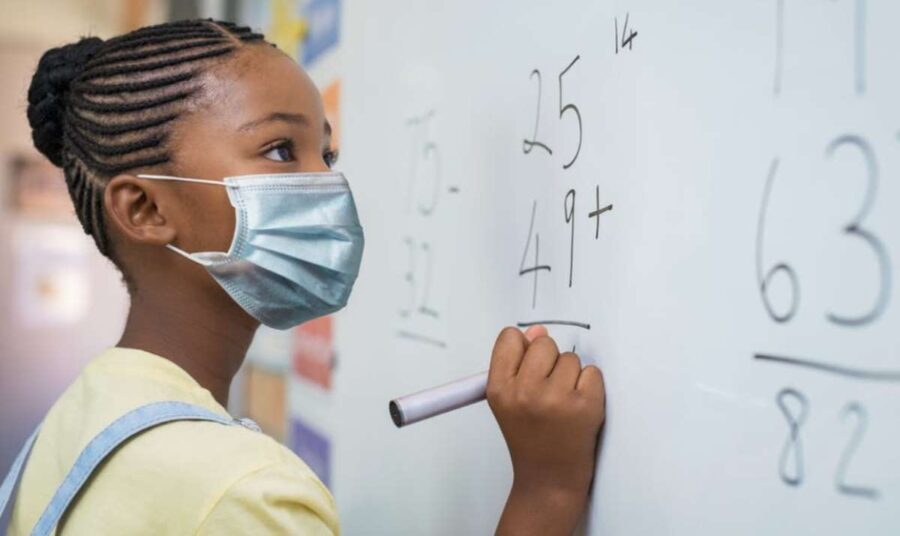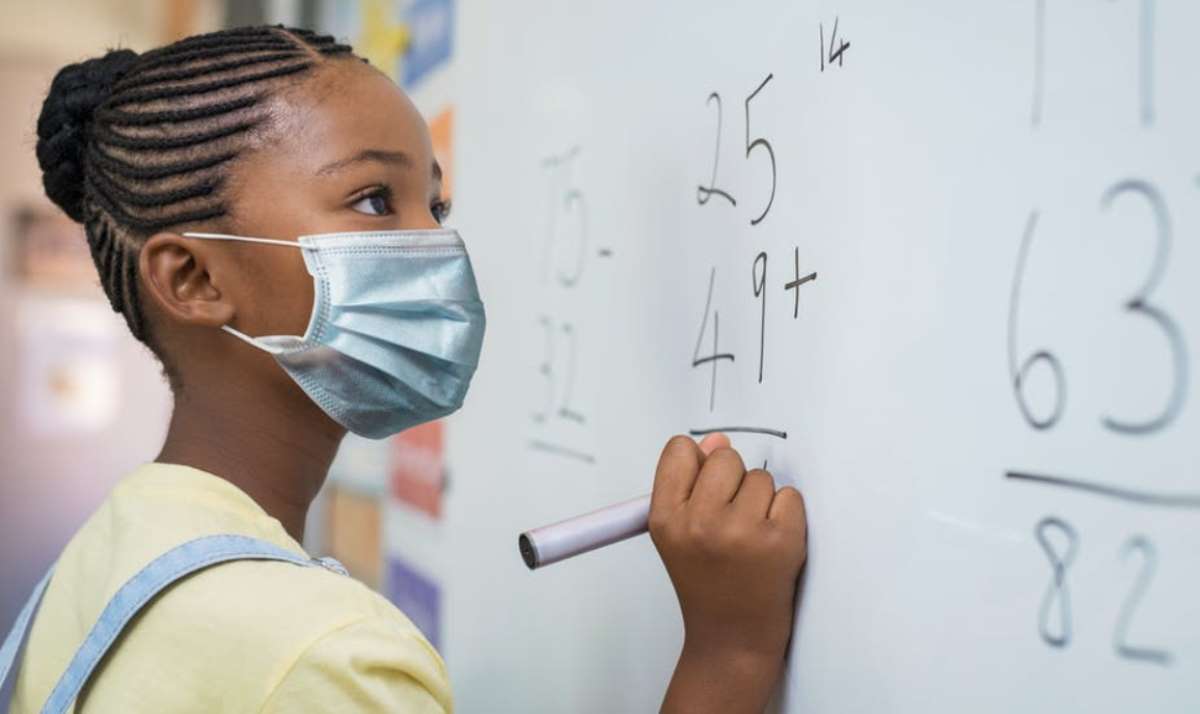
Counting the Cost of Lost Schooling in South Africa
A year ago, at the start of the COVID-19 pandemic, we predicted that school closures in South Africa would result in learning losses. A loss of contact learning time would lead to lower educational outcomes, and the losses would be higher in no-fee schools (serving children from low income families) than in fee-paying schools. Now […]

A year ago, at the start of the COVID-19 pandemic, we predicted that school closures in South Africa would result in learning losses. A loss of contact learning time would lead to lower educational outcomes, and the losses would be higher in no-fee schools (serving children from low income families) than in fee-paying schools.
Now we can update how much contact teaching time was lost in 2020 and make an “informed speculation” on the amount of learning loss based on changes in test scores between 2019 and 2020.
Globally, the literature on the impact of the pandemic on education highlights learning losses and decreased attainment scores as a result of school closures, widening of pre-existing education disparities and wiping out of learning gains made over time.
In South Africa, the March 2020 hard lockdown led to school closures and the expectation that teaching and learning would continue from homes. Schools and households with resources were better able to sustain learning by going online.
Generally, households of learners in no-fee schools didn’t have those resources. Many children didn’t have a quiet workspace, desk, computer, internet connectivity, or parents who had the time or capacity to supervise learning.
Schools closed on 14 March 2020 and returned in a staggered manner from 8 June 2020. The first 46 days of the school year, pre-shutdown, could be categorised as normal schooling. Grade 12 (final year of secondary school) and grade 7 (final year of primary school) learners, after not attending school for 28 and 33 days respectively, were the first to return. Grades 5 and 8 were the last to return after learners had been away from school for 81 days.
Following social distancing protocols, learners attended school on a rotational basis, some on alternate days.
Education economist Martin Gustafsson estimated that the majority of learners could have lost almost 60% of their contact school days – or 65% for children in the lower socioeconomic groups.
The curriculum had to be reduced and reorganised for completion in 2020. In January 2021, 40% of school principals reported that they had not completed most of the trimmed curriculum for most subjects.
The research
I co-authored a comparative study of the short term educational impact of COVID-19 – a book chapter which discusses the impact on the education system and on the individual schools. The goal was to examine the effects of school closures on loss of learning time and educational outcomes.
The loss of contact learning time can be quantified but it’s harder to quantify the effect of school closures on learning outcomes, like achievement scores. Many countries have resorted to predictions extrapolating from other studies.
In Belgium, however, researchers were able to calculate the effects of school closures on mathematics scores for grade 6 learners using six years (2015 to 2020) of standardised test score data. They found that mathematics school averages in the 2020 cohort dropped by between 0.19 and 0.25 of a standard deviation when compared to the averages in the five previous years. The standard deviation, a statistical value, tells us about the dispersion of test scores around the mean.
Not having a similar set of data, we posed the question: if the 2019 Trends in International Mathematics and Science Study test had been administered to grade 9 learners in October 2020, what would their mathematics achievement score have been? Grade 9 learners had taken the test in September 2019, so we could use the findings from the Belgian study to speculate how our learners could have fared in a “2020” test.
The Belgian study provides us with robust findings of the effects of school closures on standardised test scores. We applied the Belgian results to South African Trends in International Mathematics and Science Study 2019 data to extrapolate the South African learning losses. These results provided us with a scenario of the minimum learning losses in South Africa for 2020.
From the Belgian findings, we extrapolate a learning loss by 0.25 standard deviation in no-fee schools, 0.19 standard deviation in fee-paying schools and 0.21 standard deviation nationally. Applying these values to the South African 2019 data, the table below shows the South African achievement estimates for the 2020 equivalent of the study.

Thus, if the 2020 grade 9 cohort had answered the 2019 achievement test, the average 2020 mathematics scores would drop from a score of 389 to 373 points (learning loss of 4.1%). The decrease in fee-paying schools would be from 440 to 425 points (3.4%) and in no-fee schools from 361 to 346 points (4.2%).
Applying the Belgian methodology to the South African data shows that the Trends in International Mathematics and Science Study 2020 scores would have regressed to the 2015 levels, when the average national, fee-paying and no-fee scores were 372 points, 430 points and 342 points respectively.
Moving backwards
Another way of describing the learning loss is by the mathematical proficiency levels. In the 2019 Trends in International Mathematics and Science Study, 41% of grade 9 learners demonstrated they had acquired the basic mathematical proficiency. In “Trends in International Mathematics and Science Study 2020” this would decrease to 34% – the same value as in 2015.
South Africa started the post-apartheid democratic era in 1994 with very low and unequal achievement scores and slowly improved educational outcomes to the low values in 2019. The sad and uncomfortable truth is that the country will likely have ended 2020 with lower achievement scores than in 2019. The achievement gains made since 1994 will revert closer to the achievement levels in 2015 – a loss of five years of learning. The effect of the pandemic will widen existing educational inequalities that were created by apartheid policies and contemporary shortcomings.
The number of days that schools will be closed in 2021 is unknown. Neither do we know the quality of engagements when learners are in school and how individual learning recovery will occur.
If there’s no quick recovery of the learning losses, our prediction is that fewer learners will leave school with the skills and knowledge to access further opportunities for learning or to find an appropriate place in the labour market. COVID-19 will have long lasting effects on education and society broadly.![]()
Vijay Reddy, Distinguished Research Specialist, Human Sciences Research Council
This article is republished from The Conversation under a Creative Commons license. Read the original article.
